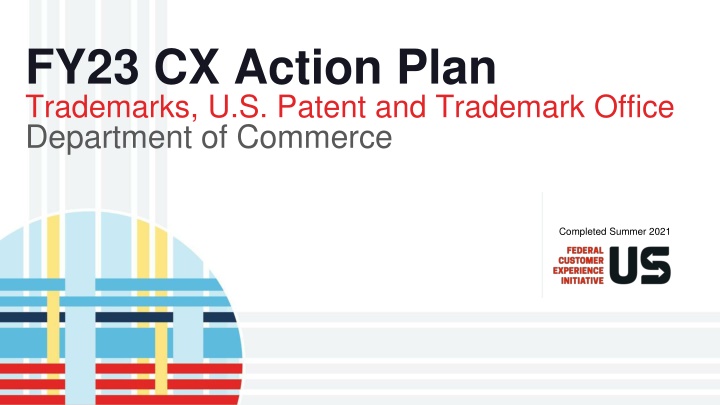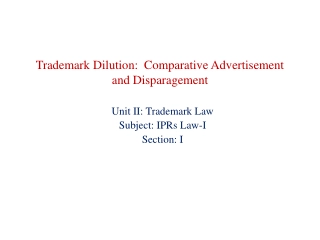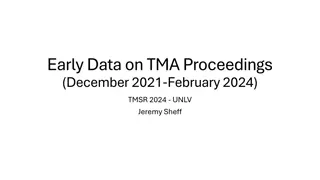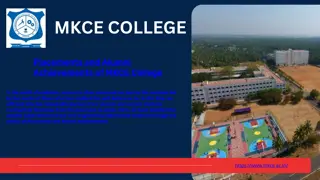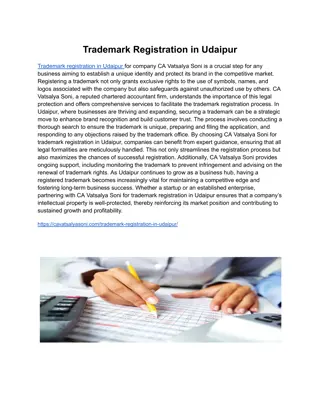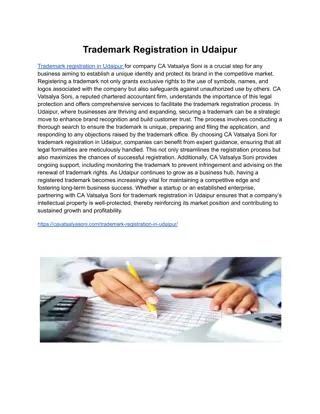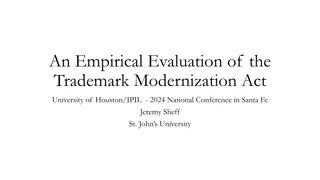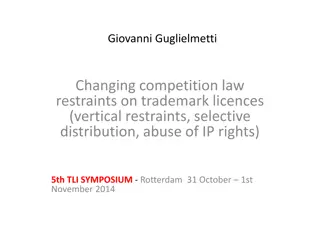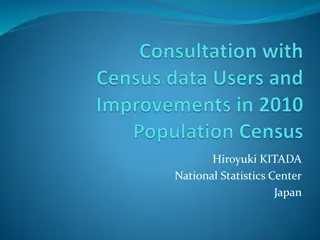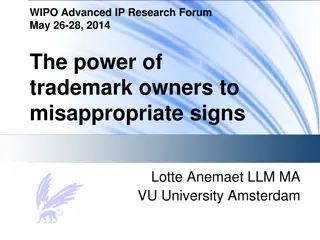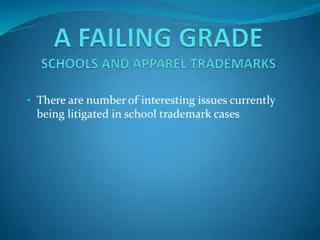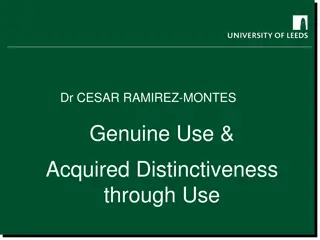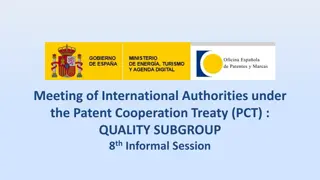Trademark Office Achievements and Innovations Summary
The U.S. Patent and Trademark Office, Department of Commerce, successfully completed the FY23.CX.Action Plan for Trademarks in Summer 2021. Key accomplishments include enhancing website satisfaction scores for trademark customers, implementing a new Paperwork Reduction Act clearance for quicker CX research, and conducting usability testing for website sections redesign. The organization serves a diverse range of customers, from individual entrepreneurs to multinational corporations, aiming to protect brand identities through federal trademark registration. Despite achievements, areas for improvement such as sharing research findings more effectively and aligning strategies with user needs were identified. Adaptation during the global pandemic led to successful virtual outreach initiatives, like the Trademark Basics Boot Camp, with high attendee satisfaction rates. Looking ahead, the focus remains on serving and educating businesses on intellectual property rights while striving for continuous improvement and innovation.
Download Presentation

Please find below an Image/Link to download the presentation.
The content on the website is provided AS IS for your information and personal use only. It may not be sold, licensed, or shared on other websites without obtaining consent from the author.If you encounter any issues during the download, it is possible that the publisher has removed the file from their server.
You are allowed to download the files provided on this website for personal or commercial use, subject to the condition that they are used lawfully. All files are the property of their respective owners.
The content on the website is provided AS IS for your information and personal use only. It may not be sold, licensed, or shared on other websites without obtaining consent from the author.
E N D
Presentation Transcript
FY23 CX Action Plan Trademarks, U.S. Patent and Trademark Office Department of Commerce Completed Summer 2021
FY21 Capacity Assessment Reflection Summary What we re proud of this year: Based on lower customer satisfaction scores on the website, we reviewed both quantitative and qualitative data and redesigned the Trademark Basics section of the website. The development process integrated customer experience research, diverse staff expertise, usability testing, and plain language principles to better meet the needs of customers who are new to intellectual property and the trademark filing process. Our website satisfaction score amongst trademark customers has increased by 3 points to 69.5 on a 100-point scale from FY2020 to FY2021 (Q1-Q3). Completed a new Paperwork Reduction Act (PRA) generic clearance to allow for more rapid development of CX research information collections and allowing public reporting and accountability of our performance. Customer feedback and satisfaction scores are routinely collected along much of the trademark customer journey, including website, authenticated login, filing system, response letters from the office (i.e., office action), primary contact center, and outreach. Several more surveys are in development where we have measurement gaps along the journey. Conducted usability testing on prototypes of a redesign of authenticated login and Trademark Basics section the website, and this customer feedback directly led to improvements to the prototypes prior to launching. Where we need to do better: Maturity gaps identified in the FY21 Trademark CX Capacity Assessment: Service Design - Customer research findings are frequently shared outside of the team that conducted the research. Governance and Strategy - We have defined user needs and experiences we are responsible for delivering and organize our delivery around these, rather than our own organizational silos. (e.g, service catalog agnostic of agency office definition, collaboration on IDEA Act requirements, CX council, cross-functional reports on experience measures). 2
Adapting Service During a Global Pandemic Where we innovated Trademarks invests in outreach to and education of small business owners, entrepreneurs, and others who are new to intellectual property. Prior to the COVID-19 pandemic, we provided this service almost entirely through in-person outreach events. During the pandemic, the outreach team shifted to virtual programming and developed a more robust, online Trademark Basics Boot Camp. This 8-module series provides a comprehensive overview of the process for federal trademark registration and maintaining a federal trademark, specifically designed for small business owners and entrepreneurs seeking to protect their brand and product identities. Through the first three quarters of FY2021, these outreach and education events have received a Net Promoter Score of 4.8 of 5, which indicates attendees would likely recommend the event to someone else. This validates the quality of the service and the value it brings for attendees. As a result, we plan to continue this service while looking for ways to further expand and improve. 3
HISP Equity Reflection Who is this provider intended to serve? The Trademark organization intends to serve all people and businesses who conduct commerce in the United States and would like to better protect their brand and product identities by federally registering their trademarks. Customers range from individual entrepreneurs and local small businesses to multinational corporations. We also serve the public at-large by providing enhanced confidence of the source of products and services. Are there barriers that people of color, people with disabilities, LGBTQ+ people, women, non-native English speakers, and others who have been historically underserved, marginalized, discriminated, and adversely affected by persistent poverty and inequality face with regard to this program or service? How might these individuals interact with your program differently? As part of the USPTO Equity Assessment, the Trademarks Equity Teams preliminary analysis identified possible barriers and burdens on underserved groups in areas of (1) knowledge of and experience with trademark law and (2) technological capability to access and use systems. The Trademark organization has not historically collected demographic data on our customers. Nonetheless, we are in the process of researching whether the customer feedback and other data we do have can tell us anything about challenges underserved groups face. Where do we have a knowledge gap about individuals interactions with our service we need evidence to fill? We are in the process of researching and establishing capabilities to expand our understanding of prospective and actual customers: 4 UPSTO established Equity Steering and Working Groups to implement Executive Order 13985, Advancing Racial Equity and Support for Underserved Communities through the Federal Government . We are in the process of conducting an internal assessment of services and underserved assessment of services. Trademarks is participating in the Equity Team researching and conducting outreach to underserved communities to learn of the challenges faced by underserved communities from their own perspectives and in their own words. We lack specific data about where and why prospective customers drop out of the trademark application process.
FY22 Action Update: Improve the TEAS Initial Application Form Prototype What customer need will this action address? Customer feedback indicates difficulty understanding and navigating the current initial application form, particularly for small business owners and entrepreneurs. Why is this a priority? The customer journey for all trademark filers funnels through the initial application forms. In FY20, customers submitted 738,112 total trademark filings, which was a 9.5% increase over FY19 (USPTO FY20 Performance and Accountability Report). Based on three quarters of FY21, customers are projected to submit 956,000 trademark filings, which would be a 29.5% increase (TPAC May 2021, Trademarks organization performance presentation). Who is responsible for this action happening? Office of the Deputy Commissioner for Trademark Administration: Trademark Product Line Lead Glen Brown Lead Product Owner for Trademark External Stephen Aquila Office of the Deputy Commissioner for Trademark Examination Policy: CX Administrator Charles Thomas What action(s) / deliverables / milestones will you take / hit between Oct. 1, 21 Sept. 30, 22? a) FY22 Q2: Update TEAS customer satisfaction survey to increase response rate to reach sufficient volume of responses to evaluate current state of initial application forms. b) FY22 Q4: Conduct usability testing, or similar user experience (UX) research method, on the initial application form prototype. 5 How will you measure whether these actions had their intended effect? Compare usability testing results on prototype with trends in the customer satisfaction survey results to determine if customer pain points have been addressed in prototype. What do you need to make this happen? Information technology (IT) projects to implement the Trademark Modernization Act (TMA) are the top priority, and these must be completed on schedule and within scope to allow for adequate development and UX resources are available in FY2022 to complete these milestones. The application development team is budgeted for, but this team must be funded and on-boarded in early FY22 to complete this action on time.
FY22-23 Commit to Action: CX Capacity Building What customer need will this action address? Customers need easy-to-understand information and services to better protect their trademark rights through federal registration. Why is this a priority? To keep up with the growing customer base and increasing expectations, we need to increase our capacity to collect, analyze, and meaningfully use customer feedback data to improve services. Building CX capacity within the Trademark organization will also enable us to fulfill the expanded requirements in OMB Circular A-11 Section 280, conduct adequate research for the Foundations for Evidence-Based Policymaking Act evaluation theme #3 Providing exceptional customer experiences, collaborate on 21stCentury IDEA Act implementation across USPTO, and prepare for possible passage of the Trust in Public Service (TIPS) Act which intends to improve public trust in the Federal Government by establishing customer experience as a central measure of performance for agencies and the Federal Government. Who is responsible for this action happening? Office of the Deputy Commissioner for Trademark Examination Policy: Deputy Commissioner for Trademark Examination Policy Amy Cotton CX Administrator Charles Thomas 6
FY22-23 Commit to Action: CX Capacity Building (cont.) What action(s) / deliverables / milestones will you take / hit between Oct. 1, 21 Sept. 30, 23? a) FY22: Distributing CX data Redesign CX data dashboards and distribution to provide more meaningful CX data to leadership and staff at the time they need the information. b) FY22-23: Staffing Currently have only 1 full-time equivalent (FTE) exclusively working on CX Program, so Trademarks plans to hire at least one CX staff member in both FY22 and FY23. How will you measure whether these actions had their intended effect? Currently, 1 of 7 customer-facing systems under the Trademark External Components currently measure a customer satisfaction (CSAT) score as a key performance indicator (KPI). Increase this to 5 by end of FY22 and 7 by end of FY23. KPIs are used to evaluate performance and make resource decisions, so systematically measure CSAT will routinely incorporate customer feedback into IT decision-making. Conduct survey of the target audience for redesigned CX data dashboards and distribution to determine whether they used the CX data to inform decision-making. What do you need to make this happen? Prioritization in budgeting process to maintain funding for positions and CX management platform used for surveying customers. Prioritization and collaboration with Trademark Product Line Lead, Lead Product Owner for Trademark External, and individual Product Owners. 7
